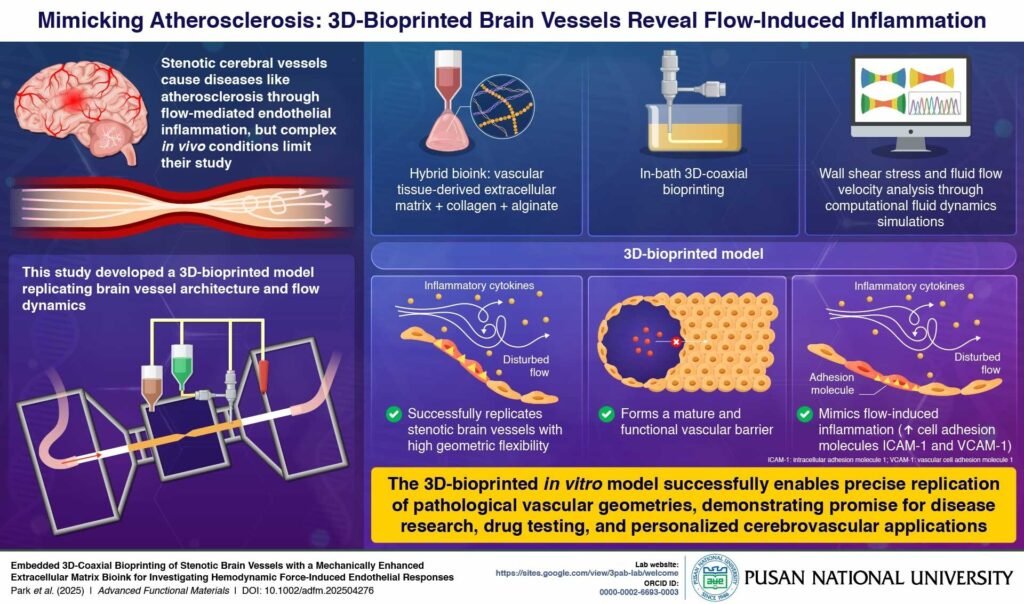A team of researchers from Pusan National University has unveiled a groundbreaking 3D-bioprinted model of brain blood vessels designed to mimic the pathological conditions of atherosclerosis and stroke. This innovation addresses a long-standing challenge in vascular research: how to replicate the complex geometry and flow dynamics of diseased cerebral vessels in a lab setting.
Using a coaxial bioprinting technique, the team fabricated anatomically accurate, perfusable vessels that simulate both healthy and stenotic (narrowed) conditions. The bioink they developed is particularly novel—it combines decellularized porcine aorta tissue with collagen and alginate, creating a structurally robust and biologically relevant scaffold. This allows the printed vessels to support human endothelial cells and withstand realistic flow conditions.
Once seeded with cells, the vessels were exposed to controlled fluid dynamics that replicate the disturbed flow patterns seen in atherosclerotic arteries. The result? The endothelial cells responded with inflammation and other biological markers consistent with disease progression. This is a major leap forward, as it demonstrates that the model can faithfully reproduce the cellular responses triggered by abnormal blood flow—something that oversimplified 2D cultures or static models often fail to achieve.
The implications are wide-ranging. Researchers now have a customizable, scalable platform to study how vascular diseases develop, test drug candidates, and even explore personalized treatment strategies. Because the model is modular, future iterations could incorporate patient-derived cells, brain-specific extracellular matrix components, or be integrated into organ-on-a-chip systems for real-time monitoring.
This technology also opens doors for more ethical and efficient preclinical testing. Instead of relying on animal models or radioactive tracers, scientists can simulate disease progression and therapeutic responses in a controlled, human-relevant environment. It’s a step toward precision medicine—where treatments are tailored not just to the disease, but to the individual.
Press Release: Pusan National University Unveils 3D-Printed Brain Vessels to Transform Atherosclerosis Research
Abstract in Advanced Functional Materials: Embedded 3D-Coaxial Bioprinting of Stenotic Brain Vessels with a Mechanically Enhanced Extracellular Matrix Bioink for Investigating Hemodynamic Force-Induced Endothelial Responses

